How to Create a Relaxing Bedroom with Milla Lascelles
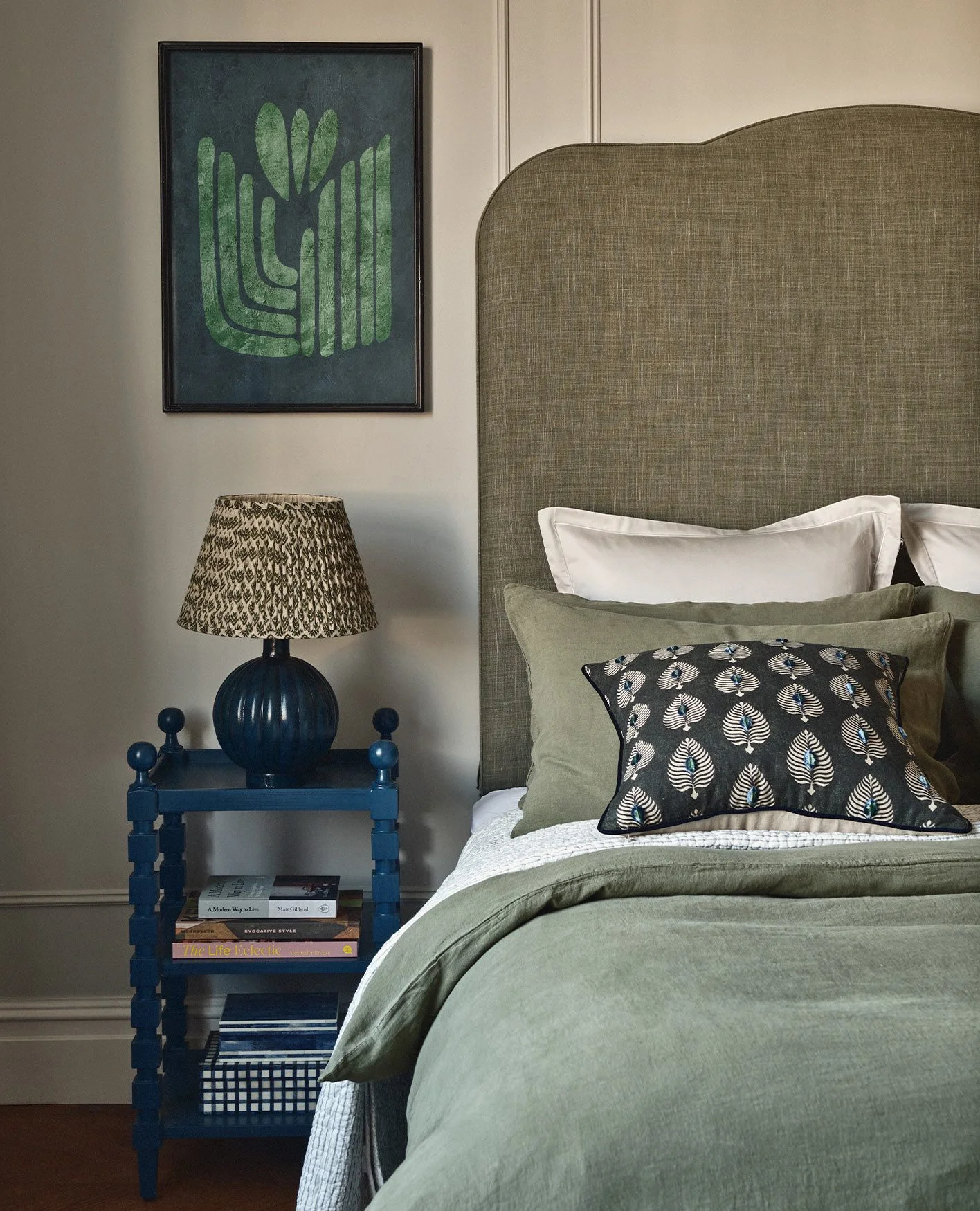
From caffeine to doomscrolling, the vices of the modern world are weighted against sleep. If it’s not a battle with blue light that’s keeping us up at night, it’s the leftover buzz from that regrettable 3pm coffee, or the stress of a work challenge playing on our minds. Getting a good night’s sleep is essential to our wellbeing, says health and lifestyle coach Milla Lascelles, not just in terms of how we feel the next day but in the long-term, too. “Sleep is essentially a life support,” she explains. “If you’re optimising your sleep, you’re doing as much as you can health wise in terms of increasing your insurance for a longer life. Sleep helps us physically recover, heal, deal with stress, solve problems, improve motor skills and put our memories together. It’s not about how many hours you get, it’s about what the quality of those hours is.”
It’s not just your routine that can shake up your sleep pattern for the better, but the environment that you choose to snooze in, too. Your surroundings are integral to your physical and mental wellbeing, says Lascelles, and creating a calming bedroom set-up could help set you up for a restful night. We caught up with the expert to discover her relaxing bedroom ideas, along with her tips for catching those much-longed-for 40 winks.
Seek Out a Calming Colour Palette
It’s not for nothing that certain colours have long been twinned with emotions. Whether it’s the fiery nature of red or the vitality of green, “colours are much more important than you think,” says Lascelles. “They can affect our moods, but also our energy levels, sleep pattern and blood pressure, and they have the power to increase or decrease stress.” Unsurprisingly, relaxing bedroom colours tend to be found at the paler end of the Pantone chart. Light, neutral pinks are soothing shades that can change the mood of a bedroom, the expert says, referencing a colour study that found pink to have a calming effect on a usually rowdy setting. “Some colours make us feel better and healthier,” she explains, noting another study that found the colour white to increase stress and decrease concentration.
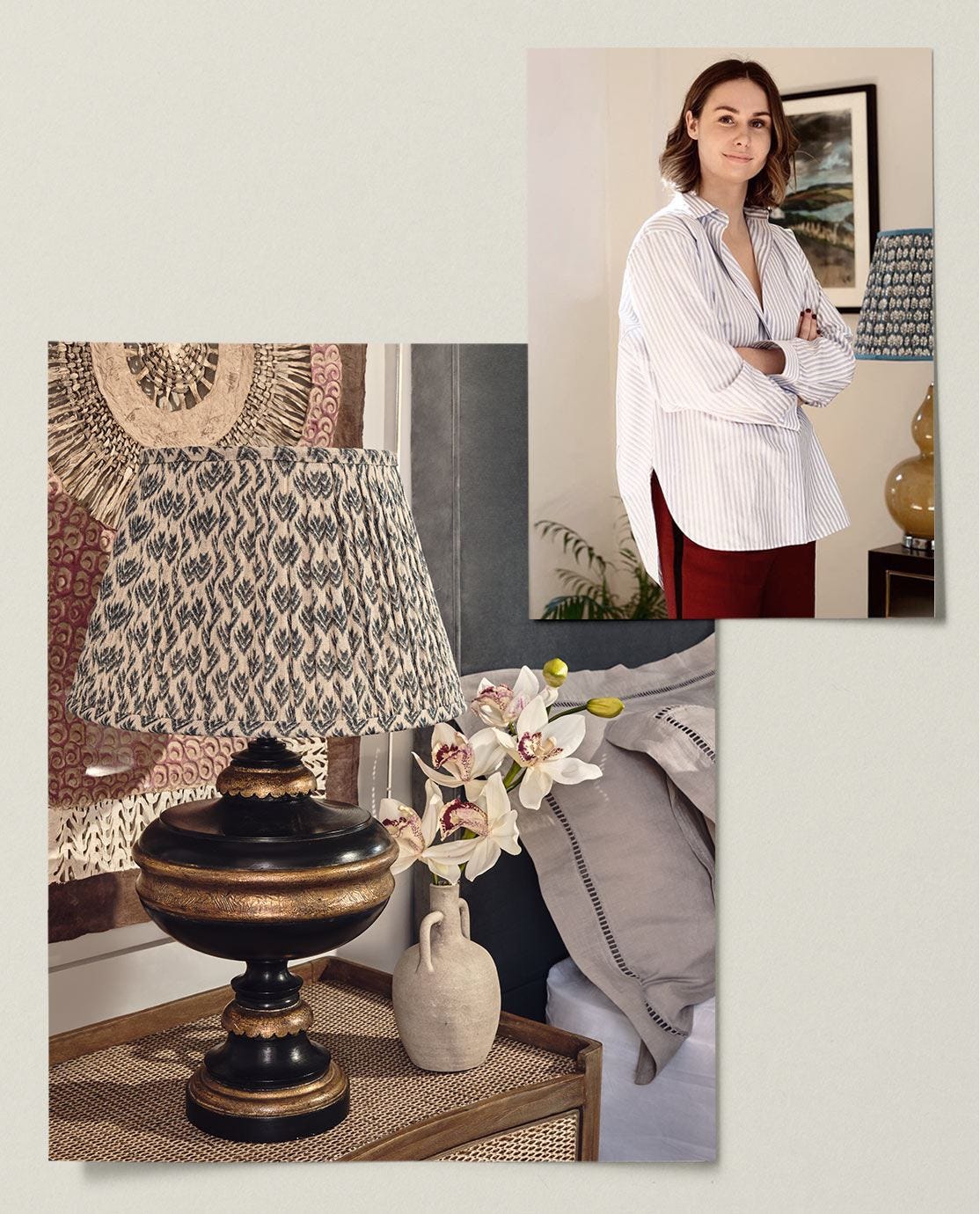
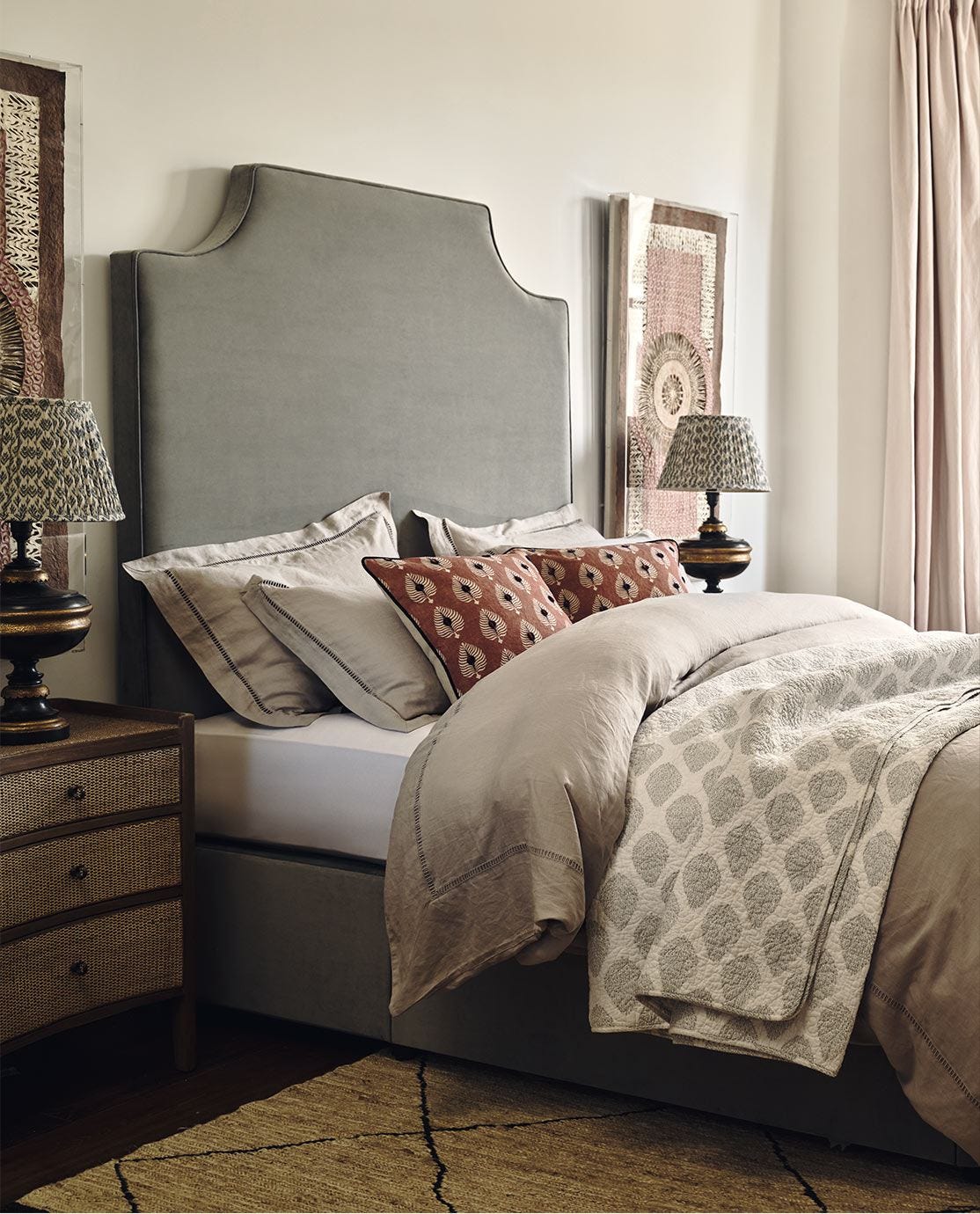
Natural tones, too, can be incredibly calming, with green believed to be a restful shade that could help to alleviate anxiety. “Peachy tones, especially in limewash paints, can also bring a tactile feel to a space and help aid a good night’s sleep,” says Lascelles. Don’t feel you need to stick to the walls to bring these calming colours in – look to soft furnishings, upholstery and artwork as calming bedroom accessories that will help you layer in serene shades throughout your space.
Bring Down the Lights
If you’re an eye mask fanatic, you’ll already know all too well the havoc light can play on our sleep, but it’s not just the fussy few that need to be concerned about brightness in the bedroom. Exposing ourselves to artificial light in the evening can prolong the time it takes us to get to sleep, says Lascelles, and it’s more than just the obvious culprits – smartphones – that are to blame: lights from chargers, laptops and television screens can all affect your slumber, “even if you use the dimming settings,” the expert says. “Studies show that we sleep better when our bedrooms are optimised for light, noise and temperature. Light is a very important part of this, as our sleep-wake cycles are heavily influenced by natural light and darkness.”
In the evening, this means embracing softer, low-level lighting, such as table lamps, fitted with “warm, white bulbs” to create a relaxing bedroom sanctuary and remind your body it’s time to wind down for the night. In the morning, draw the curtains to “make sure you’re getting morning light within 30 minutes of waking up,” Lascelles says. “This affects your levels of energy, how your immune system functions, your appetite and even the depth of your sleep the next evening. There is a 16-hour countdown to start releasing melatonin – our sleep hormone – from the pineal gland, which is already setting you up for bedtime.”
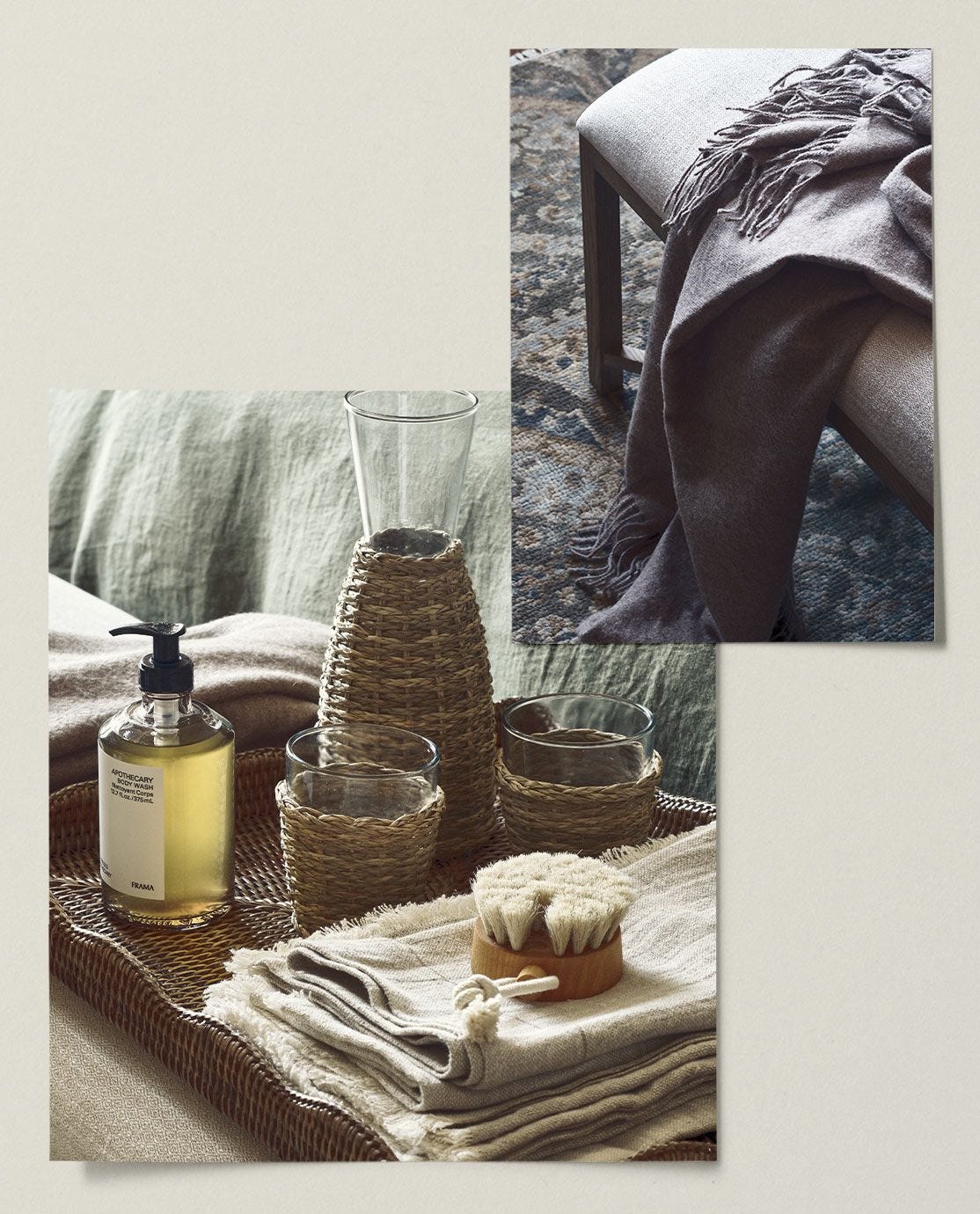
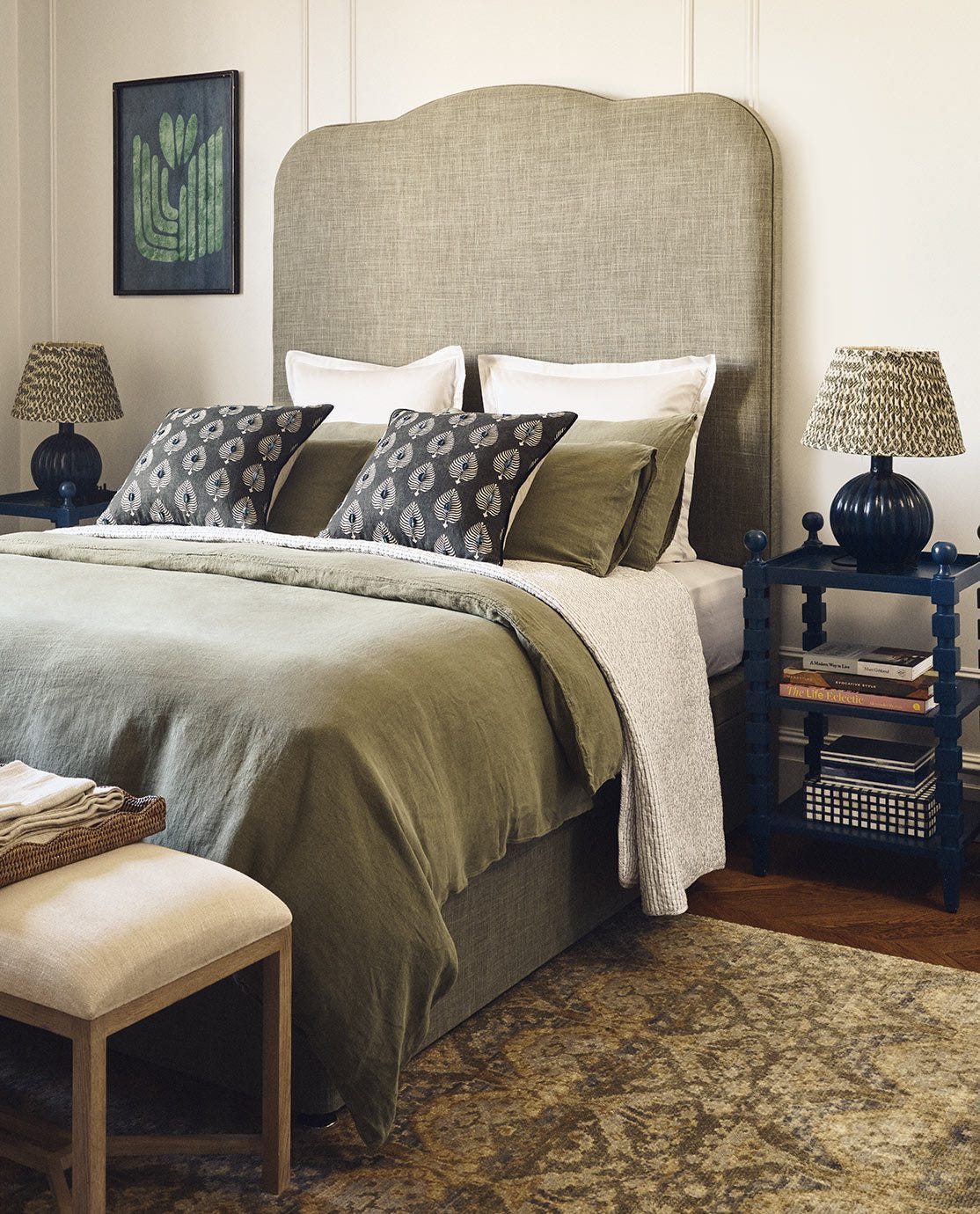
Get Organised
Tidy home, tidy mind is a phrase that has even more depth when it comes to the bedroom. Clearing away your clutter can help support a peaceful night’s sleep, as it puts tasks and distractions out of sight (and, more importantly, out of mind). “Storage accessories such as pots and trays really help to make a room look more minimal and cleaner,” Lascelles says. “Simply placing a tray on your dresser or bedside table and using it to store rings, creams and pens can make a big difference.”
While you’re tucking things away, why not slip your phone into a drawer or decorative box? Using your phone before bed has been linked to not only poorer sleep but increased anxiety and depression, says Lascelles. “Worrying about your work, your body image or FOMO isn’t great for your brain before sleep,” she explains. “Try placing your phone in a box by a certain time in the evening, and leave it there until the morning. It doesn’t even need to sit in the bedroom – why not try placing in the hallway? It will not only help your brain settle, but it will stop you scrolling before you go to sleep or first thing in the morning.” If you use your phone as an alarm in the morning, look to classic alarm clocks for your wake-up call instead.
Set Up a Relaxation Spot
Your morning routine is just as influential to your sleep experience as your nighttime routine; starting the day feeling calm and refreshed will set you up for the day and in turn affect how you approach your sleep later that night. To kick-start your morning, Lascelles suggests placing a large cushion or a small chair in the corner of your bedroom, where you can find a moment to take five. “You can use this to sit on first thing in the morning to practise breathing techniques or find your minute’s peace,” she says. Bonus points if you draw the curtains and bask in that much-needed natural light.
Lascelles runs wellness retreats, workshops and private sessions specialising in self-development and holistic health. You can find out more about her work here.
